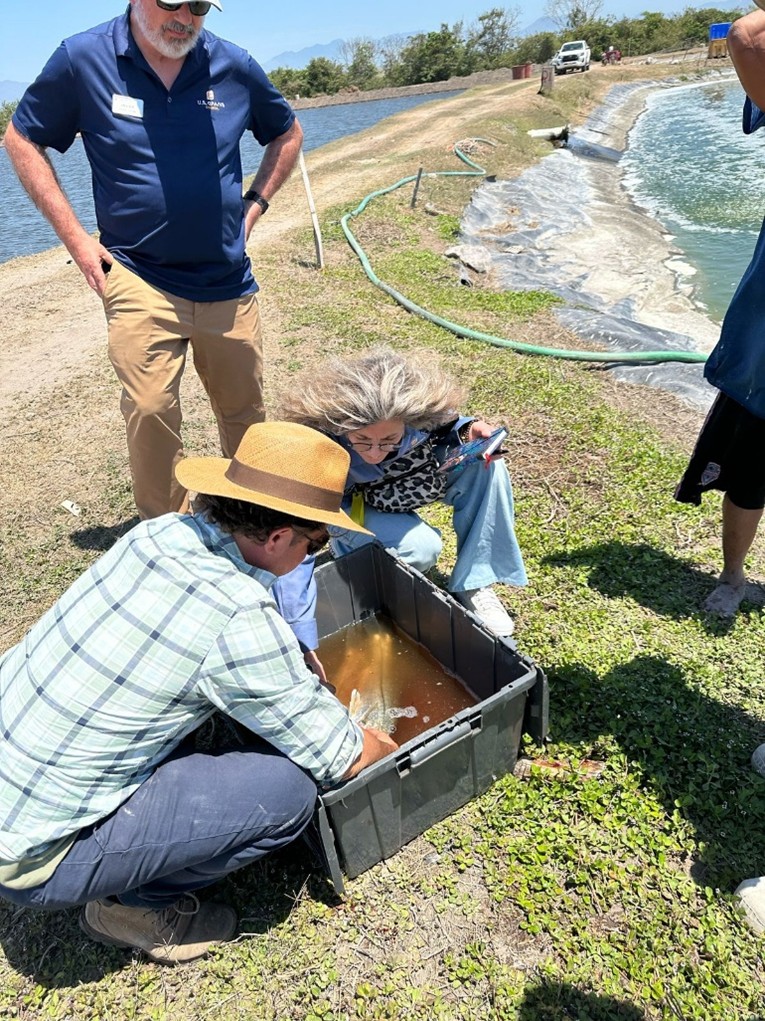Last week, the U.S. Grains Council’s (USGC’s) office in Mexico sponsored a session focused on the aquaculture industries in Mexico and Latin America during the National Coordinator of Organizations of the Balanced Animal Feed Industry (CONAAL) National Congress of Animal Feed Manufacturers in Guadalajara.
The Council’s delegation included USGC Director in Mexico Heidi Bringenberg; USGC Deputy Director in Mexico Estefanía Pérez; USGC Senior Marketing Specialist Javier Chávez; and USGC Senior Marketing Specialist Patricia Esqueda.
The Council invited Carlos Miranda, partner at Proyectos PCMX, to offer his perspective about the global aquaculture market, highlighting opportunities for Mexico to expand its industry by following the success of Ecuador as a model. In separate one-on-one meetings with attendees, the benefits and sourcing of corn fermented protein (CFP) was raised, leading to further discussions during a follow-up site visit to a research farm.
“This meeting, held every two years, is a who’s who in the Mexican feed sector and CONAAL’s invitation for the Council to participate is proof the country’s agricultural industry is invested in its continued partnership with U.S. producers,” Bringenberg said.
“The trusted quality and availability of U.S. corn and its co-products means a lot to end-users in Mexico and by expanding uses to fields like aquaculture, demand can grow even higher.”
The two-day conference opened with welcome addresses from industry leaders and government officials including Mexico Agriculture and Rural Development Department (SADER) Director Dr. Hector Arronte. Introductory topics included an overview of food health and safety in the country and innovations in feed efficiency in the livestock sector.
The second half of the event featured presentations on opportunities in the pet food market, global solutions to feed the world’s growing population and Miranda’s speech on the aquaculture industry and its potential for the future.
Miranda emphasized Ecuador’s achievements in aquaculture, driven by an efficient, integrated production cluster and technological innovations like advanced peeling equipment powered by artificial intelligence. He also noted Mexico’s potential to strengthen its industry through increased technification and a focus on domestic market development, drawing parallels to Ecuador’s sustainable family-operated practices and export diversification strategies.
Following the CONAAL event, Esqueda and Chávez traveled to Tecoman, Colima, to visit a tilapia, sea bass and shrimp farm and explore the possibility of conducting a trial using CFP and distiller’s dried grains with solubles (DDGS).
Upon arrival, the team met with Dr. Kurt Servin, who oversees the trials conducted at the farm and the production of fish and shrimp for public sale. Dr. Servín offered a tour of the facility’s 40 production lagoons and the tanks where some trials are being conducted for aquaculture feed companies.
“While the Council’s presence at major industry events like this national congress is vital for highlighting U.S. agriculture’s strengths, engaging directly with local producers is equally important. Novel ingredients like CFP empower aquaculture businesses to thrive amid fierce Asian competition by delivering precision nutrition and cost-effective sourcing from the U.S., offering a sustainable edge over costly fishmeal in feed,” Bringenberg said.
Learn more about the Council’s work in Mexico here.
About The U.S. Grains Council
The U.S. Grains Council develops export markets for U.S. barley, corn, sorghum and related products including distiller’s dried grains with solubles (DDGS) and ethanol. With full-time presence in 28 locations, the Council operates programs in more than 50 countries and the European Union. The Council believes exports are vital to global economic development and to U.S. agriculture’s profitability. Detailed information about the Council and its programs is online at www.grains.org.

